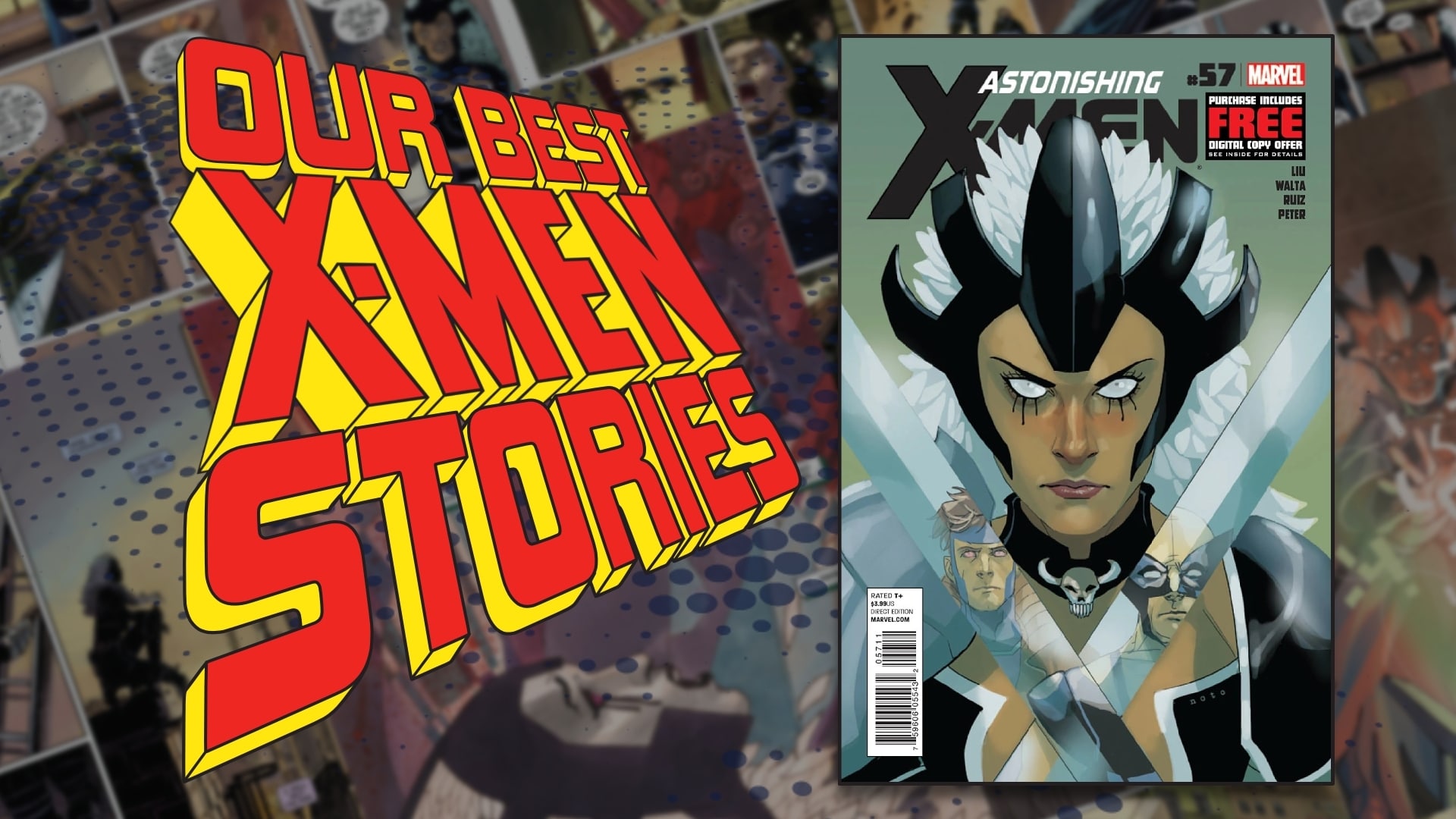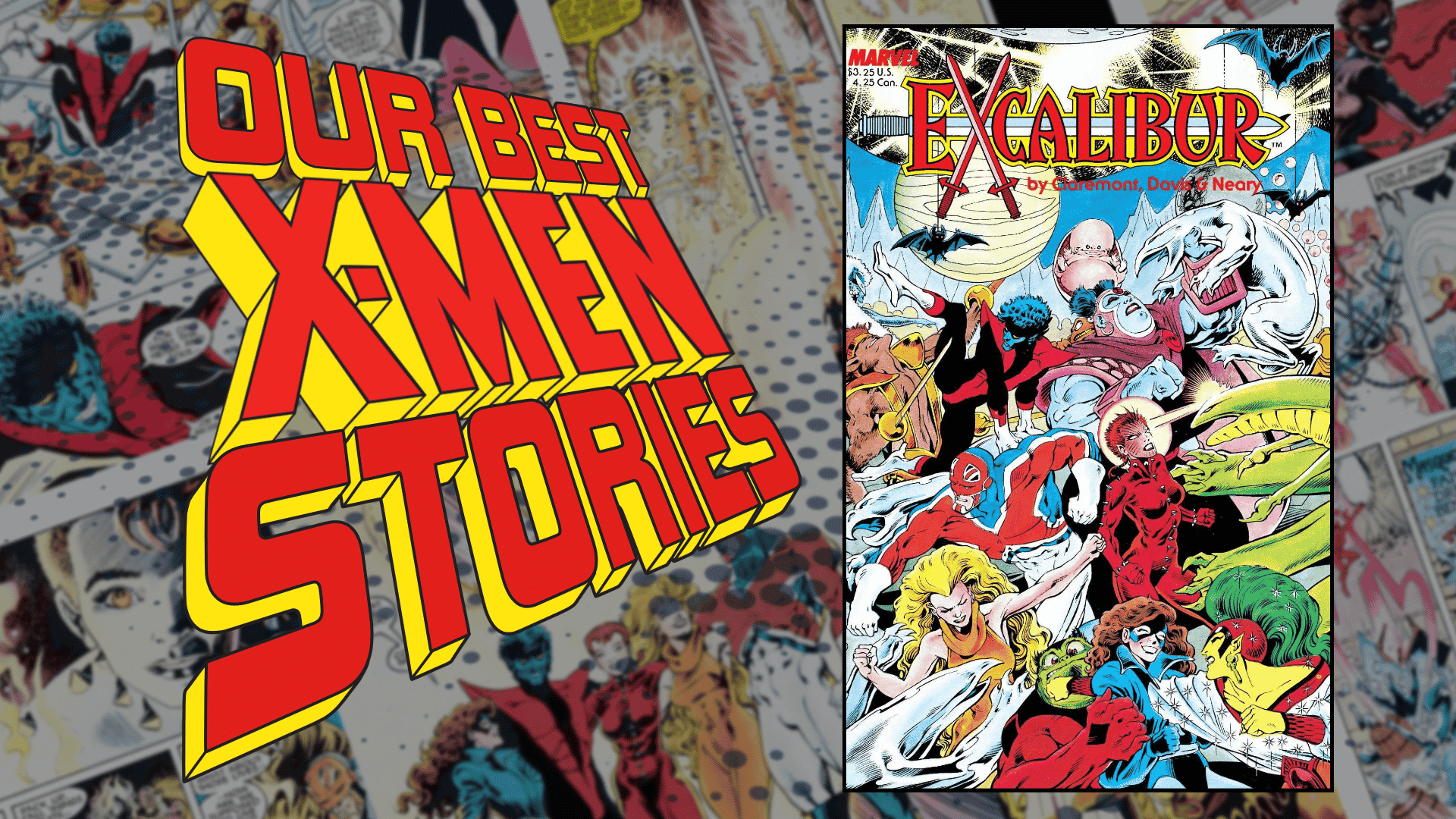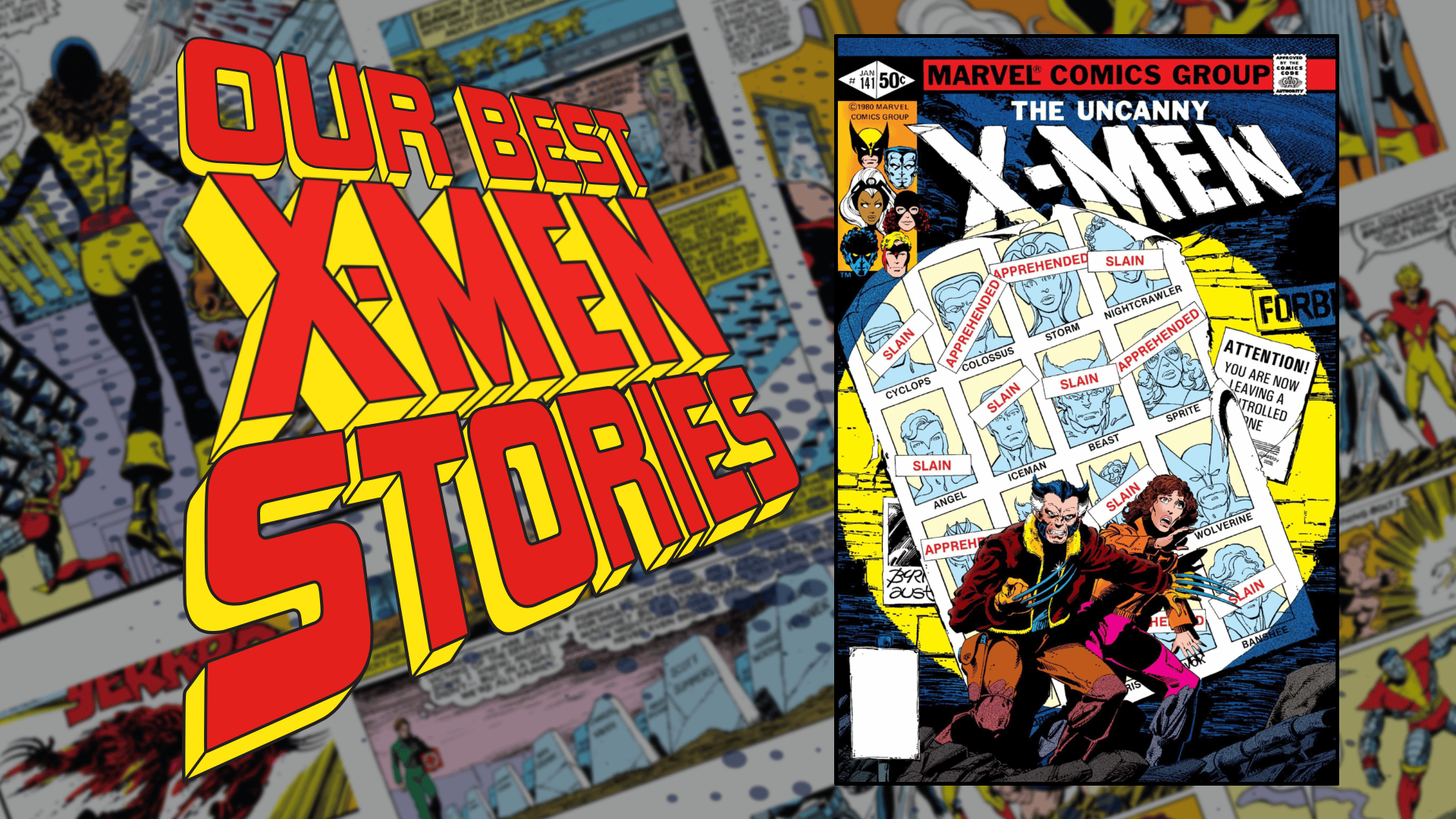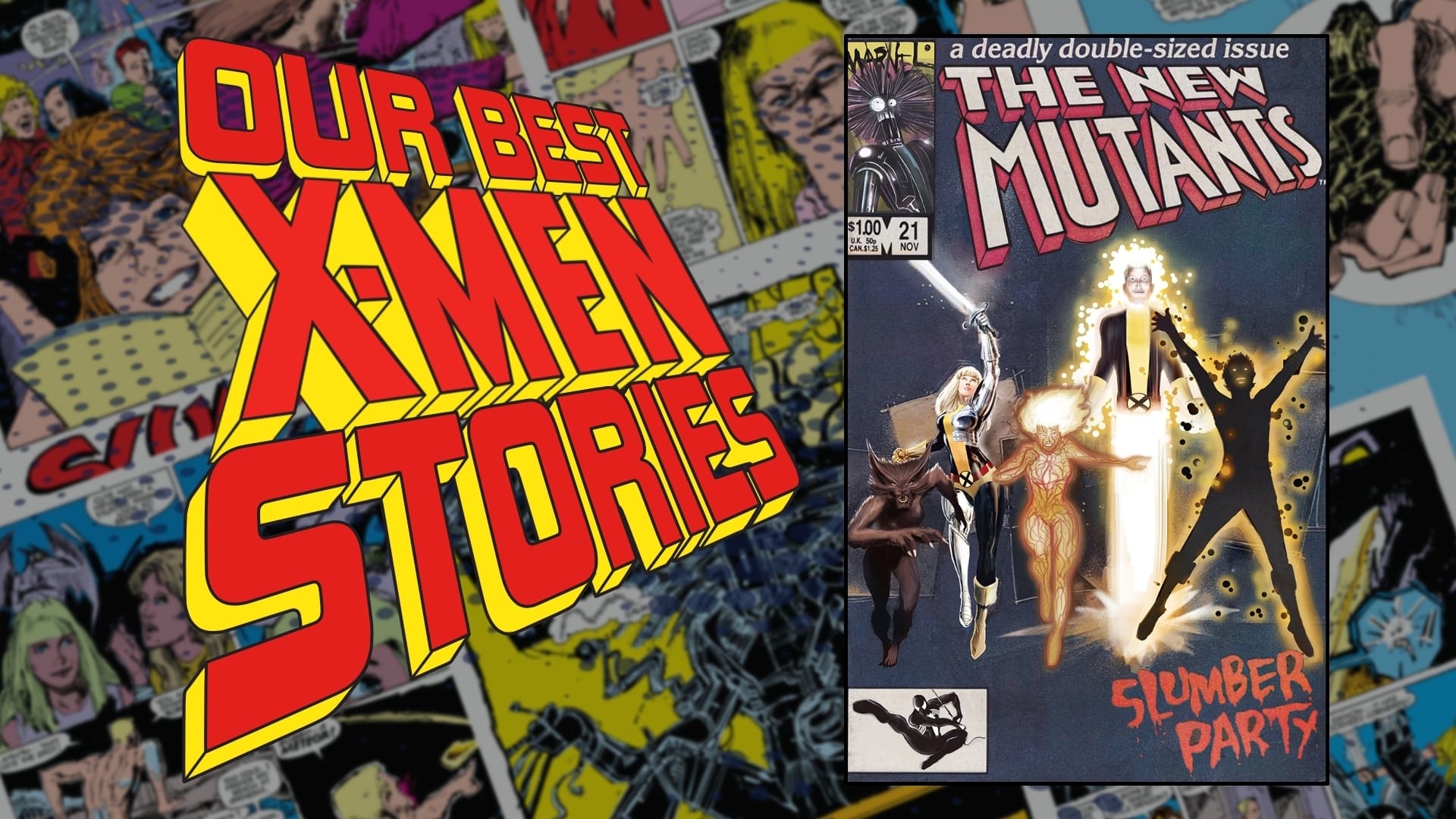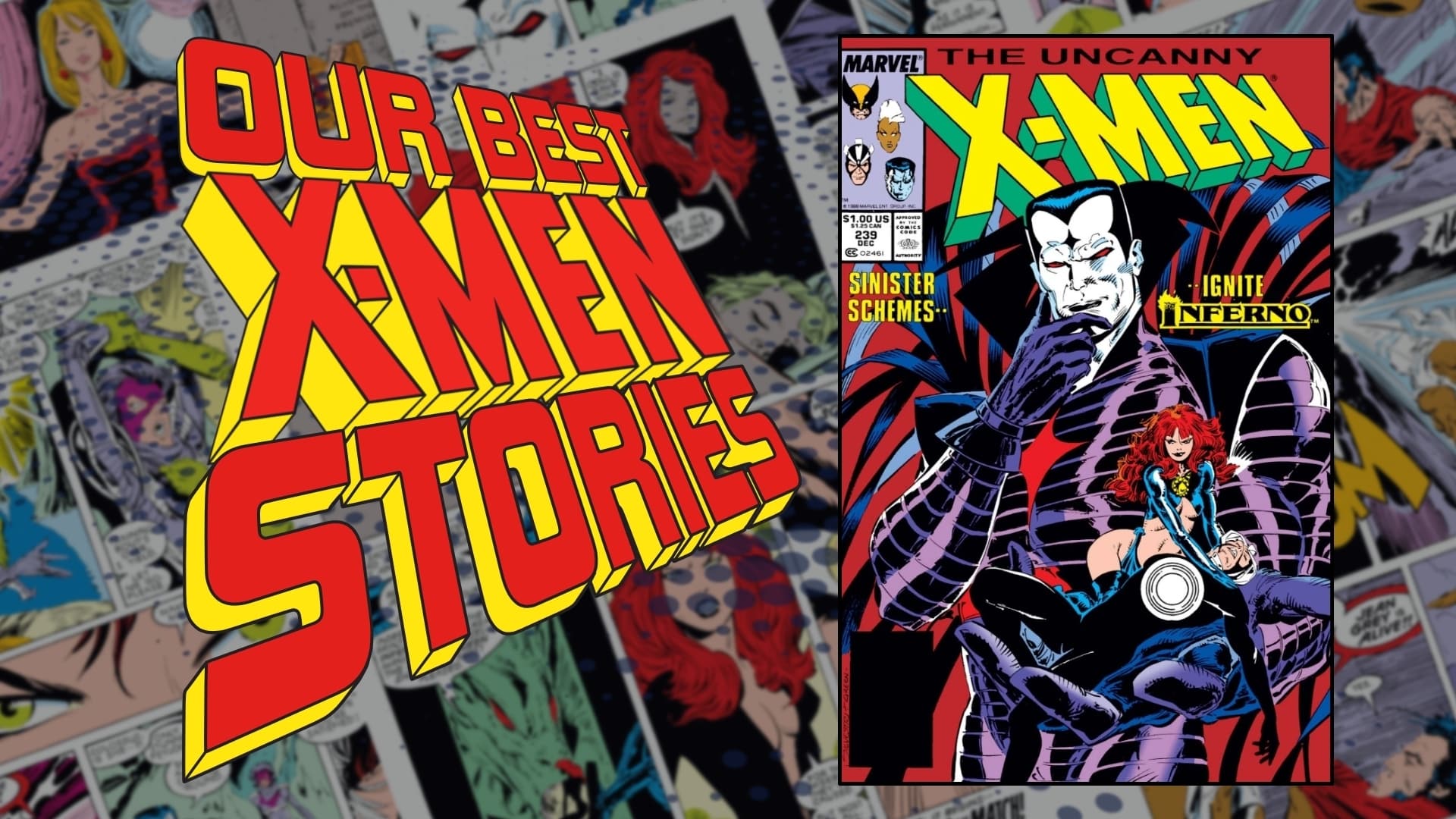In a franchise that has run for over 50 years, there is bound to be debate about which story is “the best”. Listicles will be written, podcasts will be recorded, debate will be never ceasing. In this series, we’ve gathered ComicsXF writers to share what they personally think are their best X-Men stories ever.
Astonishing X-Men #57-58 (2013), written by Marjorie Liu, drawn by Gabriel Hernandez Walta and Felix Ruiz, colored by Cris Peter and Dan Brown, lettered by Joe Caramangna, covers by Phil Noto
The phrase “greatest X-Men story ever” universally calls to mind the same thing—the one about Warbird. You know the one, the highlight of Marjorie Liu’s magnificent Astonishing X-Men run, comprising issues #48-68, drawn by Gabriel Hernandez Walta (with an assist from Felix Ruiz in the first half). What makes this two-issue tale so exceptional is it’s the best X-Men story without even featuring the X-Men. That it’s a story about an artist doesn’t hurt its GOAT status. Seriously though, Liu is able to harness the core elements of the franchise in two perfect issues centered around one of their least significant characters. That’s what we call a stunt.
Astonishing X-Men #57 takes place at Christmas time, opening with the supremely X-Men scene of Rockefeller Center. Warbird, an alien warrior left behind on Earth without a mission, observes the skaters from a cold distance underneath a caption that reads “they teach you to never let your guard down around them.” She wanders the streets of New York while her more well-known fellow X-Men relate to one another in human ways. Warbird is Shi’ar, not human, but she tries her best to fit in with teammate/presumed love interest Karma and her young siblings over Christmas dinner (“to me… you are from another planet”). At the sight of an art catalog, Warbird bolts out of the apartment without a word.
She steals the X-jet and takes off for Egypt, tracking the object from the art catalog’s cover, an artifact she recognizes as belonging to a species the Shi’ar eradicated. This race, the Fianden, were possessed of an infectious creativity and beauty that proved too dangerous to the strict, imperial Shi’ar. Face-to-face with the Fianden’s apparent sole survivor, Warbird must also confront the shameful secret she’s long struggled to deny—that she herself was born with an inclination to the arts. According to the rules of her world, this makes her defective.
Walta’s scratchy drawing style, paired with Peter and Brown’s evocative colors, elevate this story to icon status. Immediately unique, the visuals place us believably within the realm of the arts that is so central to Warbird’s trial. The Schiele-esque splash page in #57 is an all-time great comic page. While Wolverine or Gambit may not be immediately recognizable in this style, Walta is the definitive artist for Warbird. The amount of expression he’s able to wrest out of her pupil-less eyes is astounding.

Warbird’s international jaunt sets off a red alert with the S.H.I.E.L.D. super-cops and the Astonishing X-Men have to cover for her. Wolverine is there, there are explosions. The last Fianden is actually a robot left behind to memorialize its extinct creators, and the artifact Warbird believes to be a dangerous weapon is ultimately revealed to be a capsule Fianden art museum. The story ends with a shaken Warbird alone again, but now less alienated from herself as she sits down to draw under a caption reading “you are awake.”
…Except for the Ones Born Defective
Introduced in the primarily jokey Wolverine & the X-Men by Jason Aaron and Chris Bachalo, Warbird Ava’Dara Naganandini serves as bodyguard/babysitter for the delinquent heir to the Shi’ar empire. Warbird is a “fish out of water” comic relief character, constantly misunderstanding cultural cues with an unflappable seriousness. Liu’s handling of the comedy surrounding Warbird helped me realize how partial I am to this trope. At the same time, however, something was always stirring underneath her confusion. The humor quickly becomes heartbreaking as the narrative of who Warbird needs to be comes crashing into the truth of who she is. It’s not a loss in translation, but a part of herself Warbird is willfully suppressing until she can’t anymore. When the false Fianden presses her to accept the obvious, that “disobedience is not death,” she can only respond “it feels like it.”
The subtext here is precise. By accepting her authentic self, Warbird must also accept losing her privilege and safety within an oppressive power structure, in this case the powerful Shi’ar empire with its rigidly defined class distinctions. It makes complete sense that she would be so terrified of openly being herself. She stands to lose her value within the framework of Shi’ar society and thus the entire basis of her self-worth. I’m particularly empathetic to Warbird’s personal crisis, and I can’t make it through this story without tears in my eyes. Liu and Walta’s depiction feels true, rendering all the complexities and nuance with great care. While Warbird is not a mutant exactly, this story is still a wonderful example of the “mutant metaphor,” mapping magical sci-fi elements to real-life identity issues affecting marginalized populations.

Being a mutant is an unenviable position despite its remarkable benefits, specifically because it can and often does remove and alienate characters from the dominant and secure social institutions that once protected them. Those that “hate and fear” mutants are regularly the friends and family who now cast the newly manifested mutant out. The resultant pain can blind a mutant to the amazing powers they now possess while those same gifts are highly visible to an outside observer. Liu illustrates this idea with the Fianden robot’s implied envy of Warbird’s creativity, the very thing tearing her apart inside. Though it was created by an artistic society, the robot is not a true Fianden and cannot create art to its satisfaction—”All I can do is imitate. And desire.”
It doesn’t take long for Liu to reveal Warbird is in the wrong. It happens in the first half, and the true challenge is unlearning the propaganda of a world that hates and fears those on its fringes. She is able to recognize her place on the side of the oppressor, that the culture she clings to for belonging is a genocidal regime. Liu is quite aware of the world we live in, and how the destruction of culture is often a tool of warfare, albeit against international law. In fact, repentant war criminals is another well-loved trope of the franchise. These anti-war themes will continue and solidify in Liu’s Monstress series for Image (with Sana Takeda), and it’s good to see elements of it here. While identity concerns are central to the X-Men, they are also superheroes who should hopefully have solid moral grounding and work toward a peaceful, equitable world.
Warbird ultimately comes to a momentary detente with the Fianden robot, surrounded by SHIELD agents and X-Men in the middle of the desert. Warbird is torn between two options. She could risk annihilation by allowing the robot one final act for its people, or accept personal annihilation by continuing to enforce her military’s intolerant justice. Her hand is forced ultimately when SHIELD (an arm of Earth’s military, remember) moves in to attack them both, prompting Warbird to surrender the Fianden artifact to its rightful owner. The robot uses it to sacrifice itself so that the memory of the Fianden will live on in a final act of creation.

Compared to the world and universe-altering conflicts in so many other X-Men comics, the stakes of this story are relatively low. It’s also, at times, self-consciously silly; where appropriate, Liu and Walta make this a legitimately funny comic. But the emotions are still viscerally real. The truth that X-Men comics should always seek to impart is that the problem is never inside you, but in how society rejects you for arbitrary reasons. Warbird’s moment of truth comes when she realizes the connection between what she’s programmed to eradicate and herself. Her teammates, the X-Men, are on hand only so far as to give Warbird the space and support she needs to make her own conclusions. That she makes the just choice in the end is what marks her place among them.
The X-Men are outcasts who find support in their chosen family. Each individual member of that family has their own history and struggles, which can become the A-plot at any given moment. Thus, X-Men stories can be about anything. The very existence of the Shi’ar is evidence of this. The supportive family of outcasts framework is as flexible as it is strong, surviving through any genre or roster. That framework is so crucial to these comics because this family, being alike in their difference, reflect their gifts back to each other and help fortify a sense of pride. The X-Men take it a step forward as heroes by turning that love back outward. Love is their motivation, because they believe love is the healing path to justice. Look how Warbird touches Karma’s hand in a single, quiet panel leading up to the story’s climax in #58. This exciting, emotional story is a joy to read and proves that X-Men is at its best when it’s about gay art freaks who stop hating themselves in time to start really living.

Karen Charm is a cartoonist and mutant separatist, though they’ve been known to appreciate an Eternal or two.

